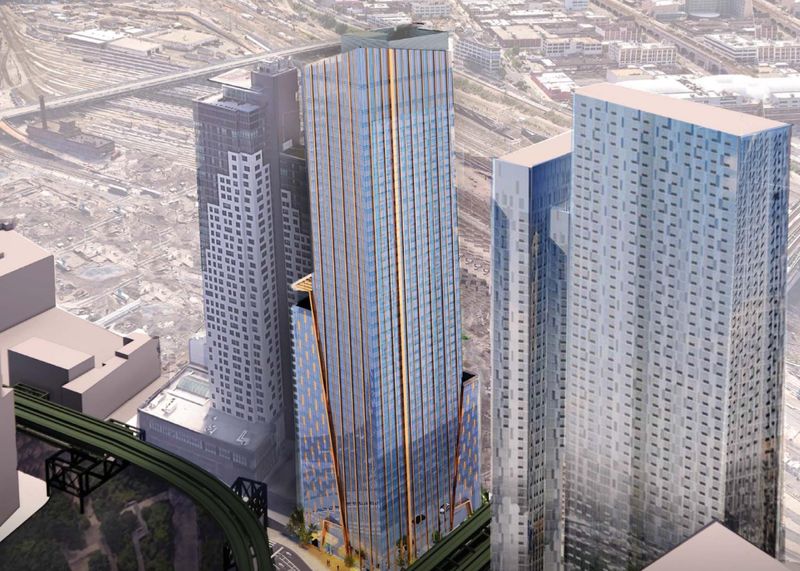Questions Glendale Site’s Safety
An independent environmental review of the proposed Glendale homeless shelter site was biased and inaccurate, Community Board 5′s chairperson charged in the advisory body’s formal response submitted last week to the city’s Department of Homeless Services (DHS).
“It is disturbing that a respected firm such as AECOM USA Inc.,” which conducted the analysis for the DHS, “would skew an analysis in favor of its client,” Vincent Arcuri wrote to DHS Commissioner Gilbert Taylor in a letter dated last Wednesday, July 9.
Point by point, Arcuri charged in the eight-page letter, AECOM neglected to address a host of issues concerning 78-16 Cooper Ave., the long-defunct former factory where the nonprofit Samaritan Village intends to build a transitional housing shelter for up to 125 families.
Though AECOM claimed in its report the project would not potentially affect public policy, Arcuri argued the plan went against stated goals of the de Blasio administration to move homeless persons out of shelters and into independent, affordable housing.
“Since the DHS has stated that there is an immediate need for transitional housing for the homeless, this site and the idea of ‘warehousing’ homeless families is contrary to the stated position of the current administration and all reason and compassion,” Arcuri wrote. “The de Blasio administration is diametrically aligned against such thinking, and has stated on numerous occasions that families should be maintained, in tact, in familiar surroundings through rent subsidies, and not degrading facilities such as that proposed by Samaritan Village.”
AECOM suggested in its report the shelter’s presence would not have an adverse affect on nearby health care facilities and first responders. Arcuri claimed the opposite was true, as the addition of 125 families- roughly 500 persons, in total-would “have a major impact on fire and police services.”
“The 104th Precinct is currently understaffed and is in ‘alert’ status on most shifts,” he wrote. “FDNY Engine Co. 319 is a single engine house with ‘first call’ to this site, and all of the surrounding commercial/manufacturing sites, including the adjacent Independent Chemical site” on 79th Place.
Regarding Independent Chemical, Arcuri charged that the report downplayed the facility’s serious nature, noting that it is “a very active business that stores and transports many chemicals.” As listed in an attachment to the letter, they include sulfuric, sulfamic and nitric acids and sodium hydroxide (described as a caustic soda).
He would further state that the study failed “to acknowledge or address the severity of hazardous materials shipped to, stored on, repackaged and shipped from the adjacent Independent Chemical Corporation.”
“The reality is that, if this illconceived homeless housing proposal becomes a reality, our city would be responsible for putting these children and teens immediately adjacent to a chemical storage and distribution facility,” the chairperson further remarked. “Other area residences are much further from the chemical plant.”
The report, Arcuri stated, also did not acknowledge the impact of regular waste shipments along the nearby Long Island Rail Road’s Montauk branch, now used by the New York and Atlantic Railway exclusively for freight transportation.
The chairperson also pointed out that photographs of both Independent Chemical and the LIRR Montauk branch were absent from the AECOM report-which included photos of other areas surrounding the proposed shelter site.
Turning to education, Arcuri suggested the shelter’s opening-and subsequent introduction of about 160 children at nearby schools-would “only worsen the existing overcrowding” in School District 24 “and further lower the education standards for our children.” He also noted AECOM posted incorrect enrollment data for schools including P.S./I.S. 87, P.S./I.S. 113 and P.S./I.S. 119.
Even though the report concluded the shelter site has adequate public transportation nearby, Arcuri stated it was “definitely not accessible” to shelter residents, since the site is a mile away from the nearest subway station (the Metropolitan Avenue M train terminus) and a “quarter-mile walk” from the Q29, Q47 and Q54 bus lines, which pass at the corner of Cooper Avenue and 80th Street.
The chairperson also mentioned the entrance to the shelter site is “located at the easterly uphill end of the Cooper Avenue underpass,” which has poor sightlines “due to the rise in the road and the merge of 71st Avenue traffic with Cooper Avenue.”
“Oncoming westbound traffic is almost invisible at this point,” he added, pointing to a potential traffic safety problem for shelter residents walking through the area.
He also disputed the report’s findings that the shelter fits the character of the surrounding area, as properties “within the 400 foot radius” study area around the site “are predominantly the same” industrial or manufacturing nature.
Arcuri also found it “unbelievable” that AECOM included nearby cemeteries in its classification of “open space resources” close to the shelter site. The report claimed that there were 170.8 acres of open space nearby.
“How disingenuous is this?” he stated. “When one subtracts the three cemeteries listed” in the report-St. John, Mt. Hebron and All Faiths- “the actual relevant open space in the study area is 17.8 acres, not 170.8 acres.”
Arcuri deemed the report “flawed and should be rejected outright,” and further requested that the DHS provide to Board 5 copies of the phase 1 environmental assessment and the phase 2 subsurface investigation, conducted in advance of the environmental study.
Copies of Arcuri’s letter to Taylor were forwarded to Mayor Bill de Blasio, Queens Borough President Melinda Katz, City Council Member Elizabeth Crowley, State Sen. Joseph Addabbo, Assemblymen Andrew Hevesi and Mike Miller, Rep. Grace Meng and City Comptroller Scott Stringer, who has the authority to sign or reject the DHS contract with Samaritan Village.

































